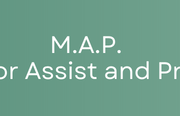Andrea Rocchelli was taking photos. He was targetted as a dangerous terrorist
Questo articolo è disponibile anche in:
![]()
At the conclusion of the Milan trial, the public prosecutor and the civil party detailed the context in which the photojournalist was killed
OSSIGENO 30th November 2020 – In the last hearing of the appeal process for the death of Andrea Rocchelli, on the 3rd November 2020, the public prosecutor (the deputy attorney general Nunzia Ciaravolo) and the civil party lawyer for the Rocchelli family (the lawyer Alessandra Ballerini) in replying to the speeches of the defendants of the accused and of the Ukrainian State focussed on some facts of undoubted interest to delineate the political and military context in which the Italian photojournalist and his Russian colleague Andrej Mironov were killed, that 24th May 2014. They clearly stated that:
- a war was not being fought in Ukraine, since the national authorities had not declared a state of war, but the authorities faced an emergency situation that permitted a counter-terrorism operation.
- the use of weapons for offensive purposes against persons clearly distinguishable as unarmed civilians, in this case journalists, remains unjustified and unjustifiable.
- military operations had already endangered the inhabitants of the area, their homes, and a hospital. Andrea Rocchelli and his companions went to that area precisely to ascertain this serious abuse against civilians and document it, as is the task of journalists.
NO ANTI-UKRAINIAN PREJUDICE – “In their speeches – said Dr. Nunzia Ciaravolo – the defenders accused the Assize Court of Pavia (which conducted the trial in the first instance, sentencing the accused to 24 years in prison, ed.note) to be biased and to act prejudicial to Ukraine. This is unacceptable. It was also said that the first instance ruling speaks of the occupation of the territory by the Ukrainian state, but this is not true. In the whole sentence there is no expression that could in the least offend the sovereignty of the Ukrainian state. Also in this case, something absolutely untrue has been said ».
CIVIL TARGETS – Furthermore, the Deputy Attorney General added, there are some technical elements in the defence speeches that do not add up. Because here we are not disputing the consequences of carrying out a counter-terrorism action, but “the use of heavy weapons, first of bursts of fire and then mortar shots, fired at civilians. Whether or not they were recognizable as journalists is not relevant. It was a car containing civilians, in civilian clothes, which was hit by mortar rounds. This contravenes all international conventions, according to which weapons cannot be used against civilians”. The prerequisite for defining that attack on the taxi carrying Andy Rocchelli, Andrej Mironov and William Roguelon as a normal anti-terrorist operation, added Dr. Nunzia Ciaravolo – “is non-existent, because (the targets) were journalists and even more than that they were civilians. They were not engaged in terrorist activities. It was a non-military vehicle. There were a few people taking photographs. There were no warning shots. They walked away from the car in single file. They were the target of shots from both light and heavy weapon deliberately aimed at their elimination, the deputy attorney general said. It is conduct in violation of humanitarian law and in particular of the Fourth Geneva Convention, which protects the rights of civilians in times of war”.
CRIMES AGAINST HUMANITY – The public prosecutor then quoted a Human Rights Watch document dated May 23rd 2014. It is the report of a visit by the researchers of the association who interviewed the civilians who lived in the outskirts of Sloviansk: “It states thus: At least 9 houses in the village suffered serious damage, every night the civilians were forced to hide in the basements. You have seen the photos taken by Rocchelli: children can be seen sheltering in the cellars to escape the bombings”.
Human Rights Watch, Dr. Nunzia Ciaravolo continued, describes the destruction of some houses, and the accounts from some residents of the village. Human Rights Watch reported that on May 23rd there were still roofs smoking due to the heavy shelling of the previous night. On the 25th May, the day after the killing of Andy Rocchelli and Andrei Mironov and the wounding of William Roguelon, the psychiatric hospital of Sloviansk was hit by a mortar round early in the morning. “The report describes a large hole in the second floor wall, with shattered windows and fragments all over the place. Two nurses said that the wing of the building that housed 28 elderly people between 70 and 80 years, and non-ambulatory, bedridden patients was damaged. The nurses said that the night before, therefore on May 24th, a group of rebels had warned, while the staff was bringing dinner to the patients, that there would be bombings that night. As a result all the patients had spent the night in the cellar together with the nursing staff”.
RE-READING THE UN REPORTS – Lawyer Alessandra Ballerini added: “We need to re-read the UN reports on the Ukrainian conflict, in particular those of 2014 and 2016, in which there is talk of systematic torture and contempt for human rights. Regarding the war situation and the dangerousness of the place it should be remembered that a state of war had not been proclaimed. The decree 405 of 14th April 2014 of the President of Ukraine provides only for urgent measures to preserve Ukrainian territorial integrity and overcome the terrorist threat. There was no war situation and therefore all the more reason it was indefensible to shoot civilians. There is also a Human Rights Watch video that shows the attack on the psychiatric hospital in Sloviansk, where non self-sufficient elderly were hospitalized “.
THE BLACKLIST – The lawyer Ballerini then spoke about the website that lists the names of individuals unwelcome in Ukraine: “There is a harrowing blacklist on the site compiled by the intelligence services of the Ukrainian Minister of the Interior, in both Ukrainian and Russian. On this site, on this page, the names of all the journalists (sent to cover the conflict, editor’s note) are listed and are considered terrorists. For this reason, there was a warning from Reporters Sans Frontières, because this list also made their sensitive personal data public and therefore endangered the safety of the journalists sent to the scene. The list is still online. There is also a photo of Andy Rocchelli with the word ‘eliminated’ superimposed on it “. Andy Rocchelli, added the Rocchelli family lawyer, was considered dangerous, an uncomfortable individual, precisely because of his profession as a journalist.
HE WAS IN CONTACT WITH BOMBARDED CIVILIANS – Among Andy’s legacies there is an article dated May 19th 2014 that describes the conditions of civilians. And it is precisely the civilians who confirm that Andy and the other journalists went there every day to check whether the shots from the hill had hit the civilian houses or not. This is what journalists do: going into difficult places to enable us to know what is happening and to give voice to the voiceless. From there Andy and his colleagues documented the shots fired by the Ukrainian army against civilians every day. Were they therefore a danger?” GB
Read the Ossigeno Dossier: “Wars, journalists killed and impunity”
Visit the Ossigeno website which recounts the stories of Italian journalists killed: “They were looking for the truth“





Leave a Reply
Want to join the discussion?Feel free to contribute!